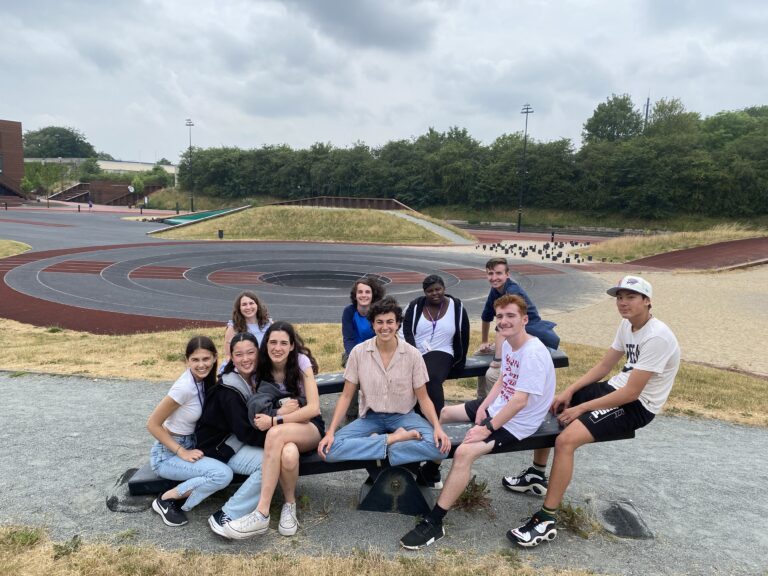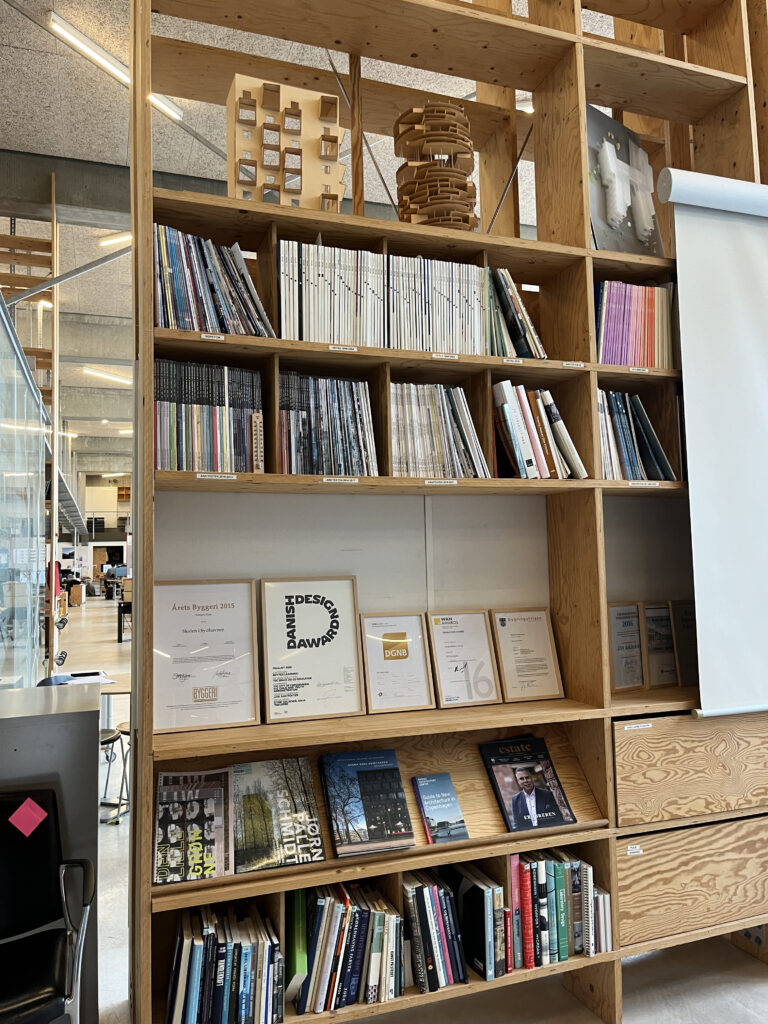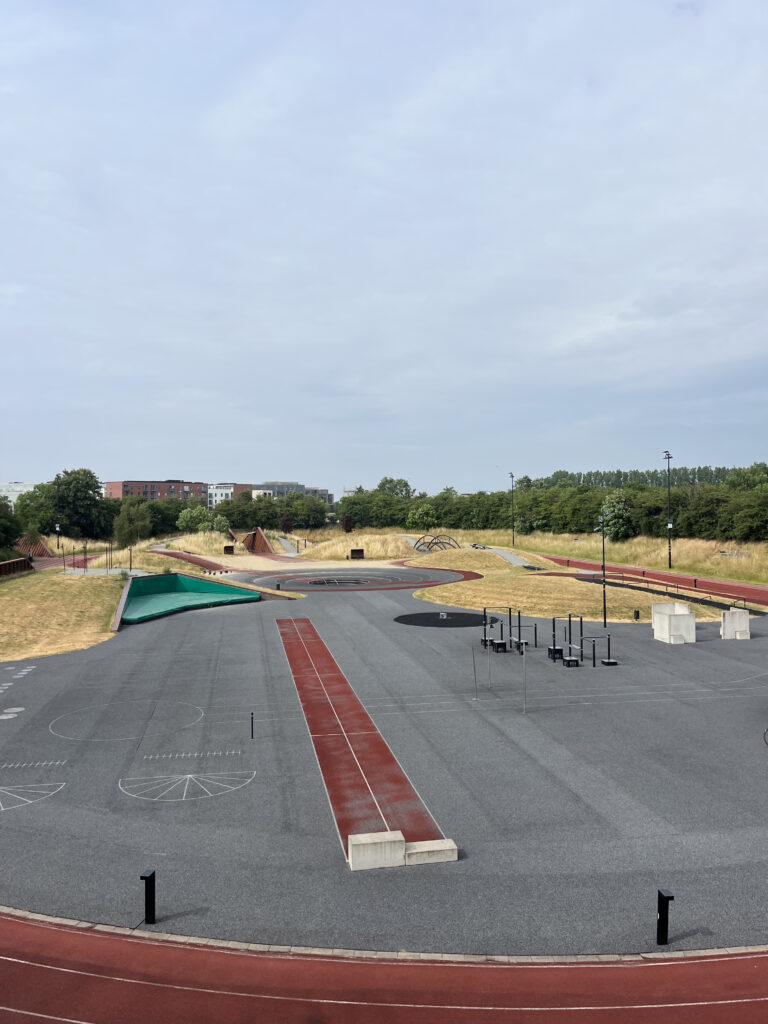Enjoy this student entry from this summer’s architecture program in New York and Denmark.

Playing on the field at the Athletic Exploratorium in Odense. Photo by Riley A.
On the 9th day of the Sustainable Architecture and Design trip with the Smithsonian, we planned to leave the city of Copenhagen and go to Aarhus (Oar-hoos). But before we left for Aarhus, we visited the architect, partner, and creative director of JJW Arkitekter Frederiksberg: Katja Viltoft.
She showed us through the firm, where she explained the following to us: how the design of a space can make that space more suitable for people in certain situations, like a room with a nice couch, chairs, and whiteboard used as a casual area to discuss ideas or acquaint with a new coworker; an architect’s responsibility to their community to improve their community; how architects have to work with engineers to balance social, environmental, and economic sustainability; how different materials work in different environments better than others and vice versa, like how a wooden beam that is strong and sustainable would be good for an environment lacking moisture, but, in a more moist area or one that is prone to fires, a wooden beam would not be the most sustainable or safe option; and finally how unsustainable materials can be more sustainable by reusing or modifying them. With that, we bid Katje farewell and left for Aarhus. While on traveling from the island of Zealand to the island of Fyn, we crossed over Storebæltsbroen, the sixth longest bridge in the world and the second longest at the time of its opening.

JJW Arkitekter Studio. Photo by Alexander F.
While on the island of Fyn, we visited MAA, Ph. D., architect, and one of the two leads of Keingard Flemming Overgaard at the Athletic Exploratorium in Odense who gave an engaging presentation of the following to us: the various projects undertaken by Keingard; how to make fitness and exercise more fun, social, and approachable by using inviting imagery, sounds, and colors as well as inclusive architectural design; how landscape architecture can work with architecture to create a more welcoming environment; how an architect must use knowledge, empathy, and creativity to create a design that benefits the people to the greatest extent; and how the best way to be sustainable when building new architecture is to ask the question, “can we fix the problem without using more land?” In other words, can we modify or improve existing architecture to fix a problem in a community without using previously untouched land? After the presentation, Flemming O. brought us to the outside of the Athletic Exploratorium where we got to frolic in the grass and play on all the magnificent structures it had to offer.

The Athletic Exploratorium. Photo by Mikayla C.
After the fun at the Athletic Exploratorium, we went back onto the bus to Aarhus where we stayed the night. We’re looking forward to more interesting activities tomorrow!
– Alexander F.
Click here to learn more about New York & Denmark: Architecture & Sustainable Design.
